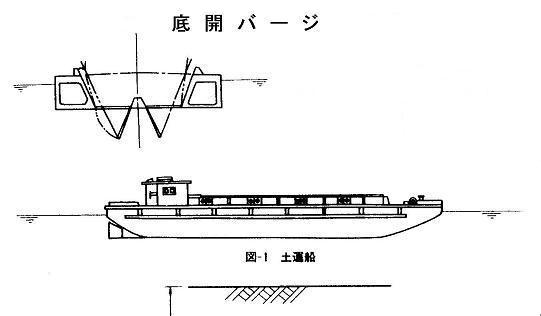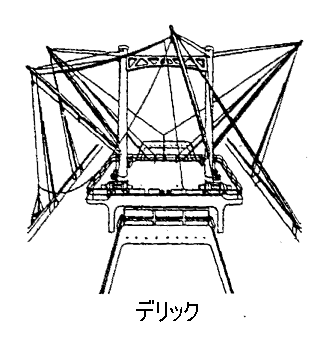- Yokohama-shi Top Page
- Business
- Menu by field
- Harbor
- Port Business Glossary
- Port Business Glossary - in-
Here's the text.
Port Business Glossary - in-
Last Updated August 5, 2024
A B C D E F G H I J K L M N O P Q R S T U V W X Y Z
-Ah- -- -- -- -- -- -- -- - La- --wa-
--
- Liner ship (liner boat)
- Ships that operate on a regular basis with or without cargo and passengers on certain routes and generally have fast speed and excellent equipment.
- Liner Alliance Charter of Conduct (A code & conduct for Liner Conferences)
- An international treaty issued in 1974 (Showa 49) and 1983 (Showa 58) after a 10-year discussion at UNCTAD to regulate the adverse effects of the maritime alliance and coordinate the interests of each country. Japan and the United States have not ratified it. The Convention is based on a closed alliance with the character of favoring state-owned shipping, and has features such as introducing a 40:20 Trade Share Agreement with a cargo loading share of 20% for third shipowners and 40% for each shipowner.
- Liner charter contract (T/C: Time Charter)
- A contract for chartering a vessel for a certain period of time. In this case, the shipowner must carry the crew, be fully fitted, and be able to withstand the voyage. On the other hand, the charterer shall pay the bunker fee and construction costs necessary for the operation of the ship to operate the ship. In other words, in principle, the ship cost will be borne by the shipowner and the navigation cost will be borne by the charterer.
- Deepwater Ship Berth (Deepwater Ship Berth)
- It's Bath.
- Bottom open barge
- A ship that transports landfill materials (dredged earth and sand, mountain sand) and throws earth and sand by opening and closing the bottom of the ship.

- Tension charge
- A stagnation fee imposed if the shipper exceeds the free time before the shipper rents the container and returns it to the shipping company.
- Dimension (Dimension)
- The dimensions of the cargo. It is usually represented by L (Length), W (Width), and H (Height).
- Regular Day Service
- A regular service that operates container ships with a multiple of 7 to 7 days, 7 days to 14 days, and always enters and exits the unloading area on a fixed day. Most shipping companies are offering this service on North America and Europe routes.
- Daily charter
- Daily charter contract. This is a partial form of a voyage charter contract and is a contract in which the vessel rents the vessel per day, which shall be set at the number of yen per day or the number of yen per weight ton per day when it is difficult to determine the number of days for one voyage.
- Adequacy method
- Abbreviation of the "Law Concerning the Proper Execution of Budgets Related to Subsidies, etc." enforced in 1955. A law aimed at optimizing the application, decision, budget execution, etc. for grants such as subsidies, contributions, interest subsidies, etc.
- Techno Super Liner
- A new type of ultra-high-speed ship with a speed of 50 knots or more, a cargo loading weight of 1,000 tons or more, and a cruising range of 500 nautical miles. At a time, a large amount of cargo can be transported at a rate similar to trucks in Japan at a much lower cost internationally than aircraft. Development is being carried out as a national project of the Ministry of Transport, and two methods of hovercraft and jet foil have been compared, and real-world experiments are being conducted. It is said to be suitable for open sea ports.
- Tejimai
- This refers to a series of tasks such as creating and sending shipping documents such as B/L and manifests.
- Devanning (devanning)
- The work of removing cargo from the container. It is also called unstuffing unpacking. (anti) bunning
- Debune connection
- The ship must moor at the base with the stern at the quay and sanbashi. (Anti) Irifune
- depot (depot)
- Cargo collection and delivery base. It takes time to collect and distribute directly between warehouses and customers due to traffic congestion, etc., so a small collection and delivery base is set up during that time, and a facility that temporarily stores, sorts, collects, and delivers cargo in certain areas.
- demurrage
- In general, it refers to excess suspension of ships, wagons, trucks, etc., and extra charges for the number of stops. Ports are often used in terms of shipping charges and storage charges imposed on shippers if cargo is not picked up after Free Time passes.
- Dual mode track method
- One of the new technologies to modal shift cargo that is too biased toward truck transportation. A dedicated road is operated unmannedly as a guide weight rack, and after branching to a general road, it runs as a normal truck by driver.
- derrick
- A mechanical device that lifts cargo using power. A main pillar or boom that has a prime pillar or boom, has a prime mover separately, and is operated by a wire rope. In the port, the ship delick of the conventional ship is used for cargo handling.

- Delick barge
- A barge equipped with a delick crane on the deck and can load and unload cargo on its own even on quays without gantry facilities. Approximately 40 40ft containers can be loaded at a time in four-tiered stacks in the Funakura. Navigation is by towing the tugboat.
- Delivery (delivery)
- Delivery or delivery of cargo and transportation equipment.
- Natural good port
- A port constructed with almost no artificial outer facilities in terrain where wind waves are shielded by capes, islands, etc. It is easy to maintain because there is little sediment deposition and there is little need for dredging. Nagasaki Port, Sasebo Port, Ofunato Port, Hong Kong, Sydney Port, etc.
- Top: crown, coping)
- Refers to the top of structures (breakwaters, seawalls, seawalls, etc.). The top height refers to the height from the basic level to the top.
Inquiries to this page
Port and Harbor Bureau General Affairs Department General Affairs Division
Telephone: 045-671-2880
Telephone: 045-671-2880
Fax: 045-671-7158
Email address: kw-somu@city.yokohama.lg.jp
Page ID: 922-853-210







